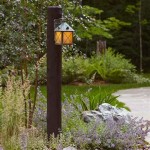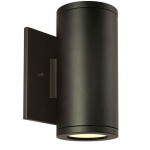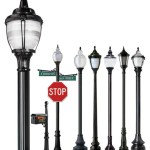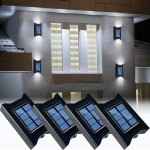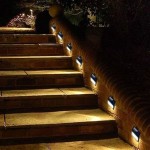Illuminating Coastal Evenings: A Guide to Outdoor Coastal Table Lamps
Outdoor coastal table lamps offer a blend of functionality and aesthetic appeal, providing localized lighting and enhancing the ambiance of outdoor living spaces. These lamps, designed to withstand the elements, are ideal for decks, patios, balconies, and covered porches, extending the usability of these areas into the evening hours. Effective selection requires careful consideration of several factors, including material durability, weather resistance, style compatibility, and lighting performance.
The primary function of an outdoor coastal table lamp is to provide task or ambient lighting. Task lighting offers focused illumination for activities such as reading or dining, while ambient lighting creates a general sense of warmth and atmosphere. The choice between these types depends on the intended use of the outdoor space. Additionally, these lamps contribute to the overall décor of outdoor areas, reflecting personal style and complementing existing furniture and architectural features. Successfully integrating outdoor lighting requires a cohesive design approach, ensuring that the lamps enhance the aesthetic without overpowering the space.
Key Point 1: Material Durability and Weather Resistance
The harsh conditions characteristic of coastal environments necessitate the use of durable and weather-resistant materials in outdoor table lamps. Salt air, humidity, and strong winds can rapidly degrade inferior materials, leading to premature failure and diminished aesthetic appeal. Common materials utilized in coastal outdoor lighting include marine-grade aluminum, stainless steel, teak, and certain types of high-density polyethylene (HDPE).
Marine-grade aluminum offers exceptional corrosion resistance, making it well-suited for areas exposed to salt spray. It is lightweight yet strong, allowing for intricate designs while maintaining structural integrity. Stainless steel, particularly grades 316 and higher, also exhibits excellent corrosion resistance. Its inherent durability makes it suitable for both the lamp base and hardware components.
Teak, a naturally oily hardwood, provides inherent resistance to moisture and decay. As teak ages, it develops a silver-gray patina, adding to its aesthetic appeal. However, teak requires periodic maintenance with specialized oils to preserve its natural color and prevent cracking. HDPE, a synthetic polymer, mimics the appearance of natural materials while offering superior weather resistance and low maintenance requirements. It is resistant to cracking, fading, and water damage, making it a practical choice for coastal environments. It often comes in various colors and textures.
Beyond the primary materials, the lamp shade is another critical consideration. Fabric shades, while aesthetically pleasing, are susceptible to mildew and fading. Opting for weather-resistant fabrics, such as solution-dyed acrylic, can mitigate these issues. Alternatively, shades made from materials like woven resin or frosted glass provide enhanced durability and easier maintenance. The selection of appropriate materials is paramount for ensuring the longevity and performance of outdoor coastal table lamps.
Key Point 2: Style Considerations and Design Integration
The style of an outdoor coastal table lamp should complement the overall aesthetic of the outdoor living space. Coastal design encompasses a wide range of styles, from classic nautical to contemporary minimalist. Selecting lamps that align with the existing décor creates a cohesive and inviting atmosphere.
Nautical-inspired lamps often feature elements such as rope accents, brass finishes, and lantern-style housings. These lamps evoke a sense of maritime tradition and are well-suited for homes with a classic coastal theme. Contemporary coastal styles tend to favor clean lines, minimalist designs, and neutral color palettes. Lamps with sleek metal frames, glass shades, and understated detailing complement modern outdoor furniture and architectural features.
Another style consideration is the lamp's scale relative to the surrounding furniture and space. A large lamp on a small side table can appear disproportionate, while a small lamp on a large table may provide insufficient lighting. Measuring the available space and selecting lamps accordingly helps to create a balanced and visually appealing arrangement. The color and finish of the lamp should also harmonize with the surrounding environment. Neutral colors, such as white, beige, and gray, blend seamlessly with most outdoor settings. Metallic finishes, such as brushed nickel and bronze, can add a touch of sophistication and warmth.
The design of the lamp shade also plays a crucial role in its overall aesthetic. A wide shade will diffuse light more broadly, creating a soft and ambient glow. A narrow shade will focus light downwards, providing more targeted illumination. The shape of the shade can also influence the lamp's style, with drum shades offering a contemporary look and empire shades conveying a more classic feel. Attention to these stylistic details enhances the overall design of the outdoor space.
Key Point 3: Lighting Performance and Practical Functionality
The lighting performance of an outdoor coastal table lamp directly impacts its functionality and usability. Factors such as light output, color temperature, and bulb type influence the quality and ambiance of the illumination. Selecting the appropriate lighting characteristics is essential for creating a comfortable and inviting outdoor environment.
Light output, measured in lumens, determines the brightness of the lamp. The required lumen output depends on the intended use of the area. For ambient lighting, a lower lumen output is sufficient, while task lighting requires a higher lumen output. Color temperature, measured in Kelvin (K), determines the warmth or coolness of the light. Warmer light (2700K-3000K) creates a cozy and inviting atmosphere, while cooler light (4000K-5000K) provides brighter and more focused illumination. The choice of color temperature depends on personal preference and the intended use of the space.
Bulb type also influences lighting performance and energy efficiency. LED bulbs are the most energy-efficient option, offering long lifespans and low operating costs. They are available in a wide range of color temperatures and lumen outputs, making them suitable for various applications. Incandescent bulbs provide a warm and natural light, but they are less energy-efficient and have shorter lifespans. Halogen bulbs offer a brighter light than incandescent bulbs, but they also consume more energy. The choice of bulb type depends on balancing lighting quality, energy efficiency, and cost considerations.
Practical functionality extends beyond raw light output. Features such as dimming capabilities allow for adjusting the brightness of the lamp to suit different occasions and moods. Integrated timers can automatically turn the lamp on and off at predetermined times, providing added convenience and security. Some lamps also include USB charging ports, allowing for convenient charging of electronic devices. Consideration of these practical features enhances the overall usability and enjoyment of outdoor coastal table lamps.
Furthermore, the stability of the lamp base is critical, especially in windy coastal environments. A weighted base or a design that allows for secure anchoring can prevent the lamp from tipping over. The ease of cleaning and maintenance is another important consideration. Selecting lamps with smooth surfaces and weather-resistant finishes facilitates cleaning and minimizes the need for extensive maintenance. Ensuring that the lamp is properly grounded and wired according to local electrical codes is also essential for safety. Careful attention to these details ensures the safe and reliable performance of outdoor coastal table lamps.
In addition to the factors mentioned above, the placement of outdoor coastal table lamps is crucial for maximizing their effectiveness and impact. Consider the existing light sources in the area and position the lamps to complement them. Avoid placing lamps in areas where they might create glare or obstruct pathways. Experiment with different placements to find the optimal balance of light and shadow. Regularly inspect the lamps for any signs of damage or wear and tear. Replace any damaged or worn components promptly to ensure continued safe and reliable operation. By following these guidelines, homeowners can enhance the beauty and functionality of their outdoor living spaces.

360 Lighting Natural Wicker And Rope Modern Coastal Table Lamp 566h1 Lamps Plus

Sea Foam Splash Coastal Table Lamp Nautical Luxuries

Coastal Outdoor Table Lamps Plus

360 Lighting Mendes Modern Coastal Table Lamp 26 1 2 High Brushed Nickel Blue Glass White Shade For Bedroom Living Room Bedside Nightstand Office Target

Elegant Designs 15 25 In 1 Light Aqua Buoy Rope Nautical Netted Coastal Ocean Sea Glass Table Lamp With White Fabric Shade Lt1050 Aqu The Home Depot

Buoy Rope Nautical Netted Coastal Ocean Sea Glass Table Lamp Clear Elegant Designs Target

Indoor Or Outdoor Coastal And Nautical Style Lights Light Fittings

Livingstone Ceramic Table Lamp Fat S Vintage

Coastal Outdoor Table Lamps Plus

360 Lighting Coastal Table Lamps 27 Tall Set Of 2 Rope And Clear Glass Jug Burlap Drum Shade For Living Room Family Bedroom Nightstand Target
Related Posts
